LNG terminal
description: facility for managing the export and/or import of liquefied natural gas
13 results
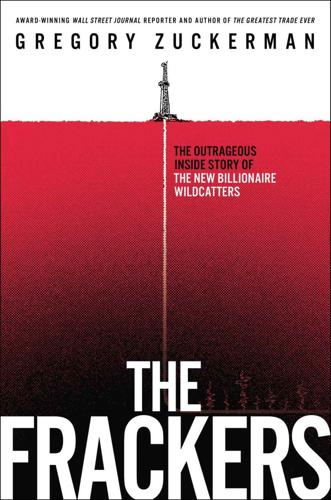
The Frackers: The Outrageous Inside Story of the New Billionaire Wildcatters
by
Gregory Zuckerman
Published 5 Nov 2013
Local technocrats did their research and received promising reports about Souki’s sites on the Texas and Louisiana coasts. Souki couldn’t get Attiyah or anyone else to sign on the dotted line, however. Cheniere just seemed too tiny and risky. Souki had made a career out of raising cash, but he couldn’t raise a measly $20 or $30 million. There already were four LNG terminals in the United States that had been built in the 1970s, some potential investors noted. Two had been mothballed, and the other two hardly were in use. Who needed another costly LNG conversion facility? Souki, still pitching his crazy idea, flew to a breakfast meeting with Michael Smith at Denver’s Brown Palace Hotel.
…
Souki described his three-step strategy: Once Cheniere received a permit to build its first plant, Souki planned to find customers willing to give Cheniere lucrative contracts to convert their LNG to natural gas. After Cheniere signed a client or two, Souki figured it would be easy to find backers willing to finance the billion-dollar construction of an expensive terminal and connecting pipeline. After he built one terminal, he’d build a few more. By then, his plan included building four LNG terminals. When he heard Souki’s idea, Smith gave an immediate and blunt reaction. “You’re out of your mind,” he said. “No one’s built an LNG facility in this country in over twenty years. . . . One terminal is a massive undertaking, four at the same time makes no sense.” Just read our plan over, Souki insisted.
…
The United States needed to become a major importer of liquefied natural gas, he told Congress. The country then could get its hands on cheaper natural gas being produced around the world. Then Greenspan uttered words that could have come out of Charif Souki’s own mouth: “Access to world natural gas supplies will require a major expansion of LNG terminal import capacity,” he said. Alan Greenspan’s speech changed everything for Souki. It was a seal of approval, out of the blue, as if Martin Scorsese had pointed to a struggling actor, ready to give up on Hollywood, as the next Marlon Brando. Within weeks, investors and potential customers gained confidence in Souki’s strategy, helping Cheniere’s stock jump to six dollars a share.
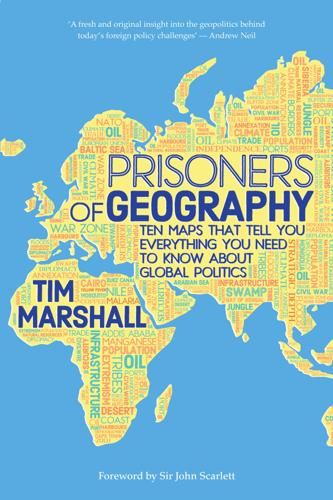
Prisoners of Geography: Ten Maps That Explain Everything About the World (Politics of Place)
by
Tim Marshall
Published 10 Oct 2016
The massive boom in shale gas production in the United States is not only enabling it to be self-sufficient in energy, but also to sell its surplus to one of the great energy consumers—Europe. To do this, the gas needs to be liquefied and shipped across the Atlantic. This in turn requires liquefied natural gas (LNG) terminals and ports to be built along the European coastlines to receive the cargo and turn it back into gas. Washington is already approving licenses for export facilities, and Europe is beginning a long-term project to build more LNG terminals. Poland and Lithuania are constructing LNG terminals; other countries such as the Czech Republic want to build pipelines connecting to those terminals, knowing they could then benefit not just from American liquefied gas, but also supplies from North Africa and the Middle East.

Connectography: Mapping the Future of Global Civilization
by
Parag Khanna
Published 18 Apr 2016
In a supply chain world, Transneft is a quiet executor of connectivity—paradoxically helping Europe win the tug-of-war against Russia. Furthermore, as American LNG terminals switch from gasification to liquefaction to export excess supply across the Atlantic, Europe will soon have a far more resilient energy infrastructure than before the Ukraine crisis. As of 2014, a new floating LNG terminal called Independence has been positioned off the coast of Lithuania, additional LNG terminals are under construction in Poland, and a Danish North Sea terminal can reverse flows to export excess gas imports southward—all of which means that Europe may soon supply more gas to Ukraine than vice versa.
…
(And unlike oil, there is no gas cartel.) Chevron, which has been operating in Asia for a century, develops almost half the gas reserves of Indonesia, Thailand, and Bangladesh and leads production of Western Australian gas as well—all mostly offshore reserves that require LNG tankers to ship.*4 An LNG terminal network and Asian gas pipeline grid, along with a gas-trading hub to replace rigid contracts with flexible pricing, would together represent the triumph of supply-demand complementarity over geopolitical division.*5 For Asians, “Drill, baby, drill” is a rallying cry for both energy security and regional stability.
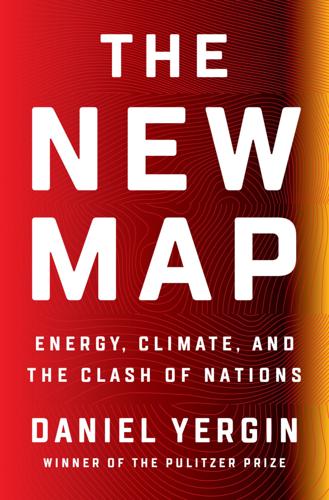
The New Map: Energy, Climate, and the Clash of Nations
by
Daniel Yergin
Published 14 Sep 2020
The first, dealing with natural gas, was to build resilience and greater energy security into the natural gas system and push for the formation of a single gas market for the entire continent. Companies increased connections among pipelines to make it easier to move gas from one part of Europe to another. They reengineered pipeline systems so that the direction of gas flows could be reversed, if needed. Investment in LNG terminals and storage was promoted. “Destination clauses,” which limited the ability to shift gas supplies from one buyer to another, were eliminated. This package of policies and initiatives would end up reshaping the entire European gas system. European policy also aimed at doing away with the traditional rigid contracts that ran twenty years or longer and in which price was indexed to oil.
…
It wanted “markets,” a world of buyers and sellers, not “relationships.” It was not necessarily against long-term contracts, but it wanted market-related pricing—that is, based on the short-term prices that emerged at the “trading hubs”—the places primarily in the UK and the Netherlands, where pipelines, LNG terminals, and gas trading converged. The EU also wanted contracts to be transparent to prevent what it defined as “anti-competitive” behavior, and it prohibited Gazprom from owning the pipes through which its gas moved across Europe.3 The second major thrust of the EU was around climate, aiming at decarbonization and efficiency and making a rapid march to renewable energy.
…
She added that Russia would “no longer be able to exert political pressure” by manipulating gas prices. Just to be sure that no one missed the point, the terminal was christened “Independence.” Lithuania’s energy minister tried to be a little more diplomatic. “The Russians are very good people, but it is difficult to negotiate with them,” he said. “We built a small LNG terminal to have a stronger position in negotiations with them. And it worked. Gazprom reduced its price.” A year later, Poland, also until then totally dependent on Russian gas, opened a much larger LNG import terminal.10 Europe now has more than thirty receiving terminals for LNG, which can be ramped up on short notice.
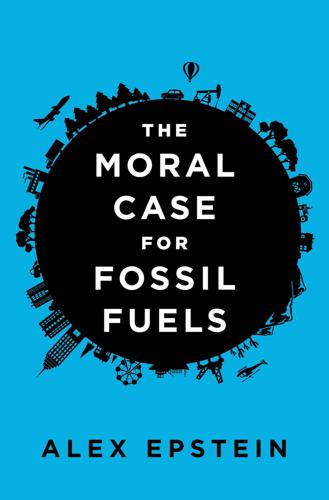
The Moral Case for Fossil Fuels
by
Alex Epstein
Published 13 Nov 2014
On Deepwater Horizon—the oil rig that exploded in 2010, killing eleven workers and causing the BP oil spill—the energy went out of control.7 In creating massive amounts of power, there’s always the risk that we’ll lose control of the power. This can mean a nuclear meltdown, a massive fire at an LNG terminal, an explosion in a coal mine, a downed live power line, or even a flying windmill. When energy goes out of control, you can both lose the energy (sometimes permanently) and often lose lives. Obviously we want to avoid this as much as possible. Fortunately, modern technology has made energy production much, much safer.
…
Jr., 192 Kenya, electricity in, 53–54 kerosene, 73 Kerry, John, 87, 100, 109, 127 Keystone XL pipeline, 9, 190 knowledge, integration of, 28, 33, 113–14, 183 Krupp, Fred, 136 land: for farming, 56, 81–82 and rising sea levels, 130–31 scarcity of, 46, 178 lice, 146 life, and energy, 37–39 life expectancy: and climate livability, 128 and fossil fuel use, 13, 14, 15, 30, 77–78, 77, 119–20 as leading indicator of human flourishing, 119–20 and natural environment, 86 rising, 174–76, 174 Life magazine, 7 Lindzen, Richard, 90 liquid fuel, 55, 68 Lovins, Amory, 9, 12, 194, 196 machine calories, 40–42 Maddison, Angus, 77 malaria, 145–47 malnutrition, 15, 174–75, 174 manure, 82 McKibben, Bill, 135, 178, 197 debate with author, 5, 187–91 dire forecasts of, 8, 22, 108, 127 Eaarth, 31–32 The End of Nature, 30–31, 108 influence of, 9, 189–90, 194 on outlawing fossil fuels, 9, 189 mechanization, oil-powered, 81 media: dramatic stories in, 164–65 on pollution, 6–7, 8 mercury, 165–66 methane, 83 methanol, 68 methyl alcohol, 68 Michaels, Patrick, 90 Miliband, David, 178 mobility, 132–33, 171 models, see computer models Monterey Shale, California, 191 morality, 13 mosquitoes, 145–46 Mother Nature, 86, 128, 129 NASA, on temperature change, 22 natural gas: availability of, 17, 18, 178 consumption of, 11, 18, 44, 44 drilling of, 74 energy from, 3, 66, 69–70 and fracking, 70 LNG terminals, 70 methane, 83 and peak-load electricity, 69 reliability of, 12 resources required for production of, 49–50, 49 and safety, 159 nature: enjoyment of, 170 hazards of, 176 nonimpact on, 194, 195, 199 preservation of, 32, 171–73 pristine, 30 transformation of, 129 Neff, Wes, 190 neodymium, 49 Netherlands, sea level in, 130–31, 134 Newcomen, Thomas, 141 New Scientist, 45 New York Times, 80 97 percent fabrication, 109–11 nitrogen: and coal, 154, 168 plant absorption of, 82, 93 synthetic, 83 nitrogen oxides, 68 no-threshold fallacy, 166–68 nuclear fusion, 195–96 nuclear power, 59, 61–63, 135, 195 government control of, 62–63 opponents of, 9, 54 reliability of, 12 resources required for production of, 49–50, 49 and safety, 61–62, 159, 168 as supplement, 44 Obama, Barack, 109, 206–7 oil: availability of, 17, 17, 178 consumption of, 11, 17, 44, 44 crude, 73 energy from, 3, 61, 71–72 exploration and extraction of, 71, 152 portability of, 71, 72 as raw material, 72, 73, 74 and resource creation, 73 shale, 71 spills, 159 strength to weight ratio of, 71 as transportation fuel, 68, 70, 71, 81–82 oil sands (tar sands), 26, 71 oil wells, first, 73 oxygen, 93 Paracelsus, 166 Parry, Simon, 155–56 peat, 131 Phelps, Michael, 40, 41 philosophy, study of, 5 phosphorus, 49 photosynthesis, 55 plants: and CO2, 92, 114–17, 115, 208 dead, 65–66, 114, 151 energy from, see biomass poisonous, 168 plastics, raw material for, 69, 74, 154 poisons, 62, 166–68 polar melt, 4, 130 polls, limited value of, 27 pollution: catastrophic, 16 legislation of, 160–61 media stories about, 6–7, 8 overregulation of, 158 reduction of, 19, 19, 149–50, 156–59, 199 risks and side effects of, 151–54, 153, 165 smog, 20, 79, 143, 152, 158 polymers, 74 population, growth of, 15, 77–78, 77, 121 positive feedback loops, 99–100 Powder River Basin, Wyoming, 192 power: cost of, 8–9, 63 definition of, 41 and energy, 41 out of control, 152, 159 rationed use of, 9 see also specific sources precipitation, 93 predators, threat from, 128 quantification, use of term, 110 radiation, 97, 168 radiation poisoning, 62 radioactive metals, 61 radioactive waste, 47 railroads, 82 Rand, Ayn, Atlas Shrugged, 138–39 rare-earth elements, 49, 154–55 Reiter, Paul, 146–47 religion, standard of value in, 30 renewability, 181 resources: creation of, 18–19, 73, 75, 180–82, 185, 195 depletion of, 8, 16, 179 evolution of, 75–76 increases in, 16–19, 181–82 proven reserves of, 17, 17 underpredicted availability of, 17–18 Ridley, Matt, The Rational Optimist, 81 Rifkin, Jeremy, 196 risks: and alternatives, 43 and benefits, 15, 28–29, 134 dire forecasts of, 16, 18, 21 media attention on, 15 minimizing, 43, 159–60 Rockefeller, John D., 74 Rokita, Todd, 29 Rolling Stone, 108, 189 Russia, gas from, 69 sanitation systems, 21, 142, 147–49, 148 SASOL, 68 Saturday Night Live, 45 Scafetta, Nicola, 111 scalability, 56–57, 63, 65, 86–87 Schneider, Stephen, 111 scientific method: ethical bind in, 112 and hypothesis presented as fact, 113 sea levels, rising, 4, 95, 106, 107, 130–31 shale energy technology, 191, 207; see also fracking shale oil, 71 Shaviv, Nir, 111 Shikwati, James, 54 silicon, 49 Silliman, Benjamin Jr., 73 SkepticalScience.com, 110 slavery, 41 smog, 20, 79, 143, 152, 158 Socrates, 91 solar cells, 47 solar power: backup required for, 53 concentrated solar power (CSP), 47–48 cost of, 46 cutting-edge promise of, 12 diluteness of, 48–50, 49, 65 energy from, 3 in Germany, 50–55, 51, 52 inadequacy as energy source, 57–58, 135 intermittency problem of, 48, 50–53, 65 niche uses for, 58 process of producing, 46 solar photovoltaic (solar PV), 47 supporters of, 9 unreliability of, 12 world use of, 11, 12, 44, 44 specialists, specialization, 27, 71, 112–14 standard of value, 29–33, 136, 195, 201; see also human life Standard Oil, 74 statistics: about disasters, 120–26, 121–25 cherry-picking, 54 computer models, 100–104, 102, 103, 108, 138 explicit endorsement without qualification, 110–11 hindcasting with, 101, 103 limited value of polls, 27 manipulation of, 17, 29, 99, 108, 109, 111–12 political uses of, 109 satellite data, 120 speculative models, 164–65 steam engine, 68, 74, 141, 142, 184 storm energy, 105, 105 storms, deaths from, 23, 121, 123–25, 123, 125, 128 storm walls, 131 sugarcane, energy from, 56 sulfur, 154, 168 sulfur dioxide, 47, 68, 158 sun, infrared radiation from, 97 sunlight, see solar power Superstorm Sandy, 24, 25 supply and demand, 75 sustainability, 177–79, 180–81 synthetics, 72, 83 technology: abuse of, 162–63 and climate livability, 126–29, 133, 137 development of, 18 energy needed to run, 129 energy needs met by, 34, 128–29, 172–73 opponents of, 196–97 solutions via, 134–35, 156–59, 207 technophobia, 164 temperature inversion, 158 temperatures: and CO2, 22, 23, 108 deaths from, 23, 121 excessive, 128 and greenhouse effect, 22, 97, 102–3 rising, 7, 22, 104 and weather, 93 Tesla Roadster, 72 thorium, 61 3D seismic imaging, 71 Three Mile Island, 62 time, 172, 183, 185–86 titanium dioxide, 49 Tol, Richard, 111 transformation, as moral ideal, 200–202 transportation: cost of, 82 high-energy, 128 improved, 123 travel, 84–85 trucks, 82 tsunamis, 130, 142 tuberculosis, 145, 146, 175 Turkey, hazelnuts grown in, 46 underdeveloped nations, 136–37 United Nations (UN): on energy supply, 26 The State of Food Insecurity in the World, 56–57 United States: air pollution in, 152–53, 153 energy availability in, 41–42 life expectancy in, 128 storms in, 124–25 technology in, 128 zero deaths from drought in, 126 uranium, 61, 196 value: of human life, see human life standard of, 29–33, 136, 195, 201 Washington, George, 147 waste disposal, 21, 142, 147–49, 148 water: bacteria-filled, 128, 142, 145 clean, 19–20, 20, 67, 86 distilled, 167 for irrigation, 83 lesser meaning of, 31–32 purification of, 144, 148–49 quality of, 143–45, 143, 163–64 shortages of, 178 for solar and wind installations, 56 water purification plants, 21 water vapor, 94, 97, 99 wealth, creation of, 18 weather: misrepresentation of, 105–6 storm-related deaths, 23, 121, 123–25, 123, 125, 128 unsettled conditions, 21 use of term, 93 wet mass movement, deaths from, 121 wilderness, pristine, 30 wildfires, deaths from, 121 wind, cause of, 47 wind power: backup required for, 53 cutting-edge promise of, 12 diluteness of, 48 energy from, 3 in Germany, 50–55, 51, 52 inadequacy as energy source, 57–58, 135 intermittency problem with, 48, 50–53 in Netherlands, 131 niche uses for, 58 resources required in, 49–50, 49, 56, 154–55 turbine blades, 49 unreliability of, 12 world use of, 11, 12, 44, 44 wood, energy from, 55, 56 World Bank, 28 Yergin, Daniel, The Prize, 159

Better, Stronger, Faster: The Myth of American Decline . . . And the Rise of a New Economy
by
Daniel Gross
Published 7 May 2012
In 2010 just 3 percent of ethanol production was exported.8 In 2004 and 2005, when U.S. companies were building facilities to allow for the importation of liquefied natural gas (LNG), it was a sign of America’s energy desperation. The thirst for fuel led to a Bad Idea for the Ages: a proposal to set up a floating LNG terminal smack in the middle of Long Island Sound, equidistant between the North Shore of Long Island and the South Shore of Fairfield County, two of the most expensive real estate markets in the nation. It was ultimately abandoned due to environmental concerns. Natural gas signifies vast export potential, and thanks to the advent of hydraulic fracking, U.S. reserves have risen dramatically.

Brexit and Ireland: The Dangers, the Opportunities, and the Inside Story of the Irish Response
by
Tony Connelly
Published 4 Oct 2017
‘Because all of our electricity and gas interconnections are with Britain,’ Environment Minister Denis Naughten told Reuters, ‘it would be irresponsible of us not to explore all other options.’ In the same Reuters report, EIB Vice-President Andrew McDowell, Enda Kenny’s former Chief Economic Adviser, confirmed EIB interest in both the interconnector, and the development of a Liquefied Natural Gas (LNG) terminal at Shannon that would pump up to 28.3 million cubic metres of gas per day into the Irish grid, further reducing Ireland’s dependency on the UK. ‘The EIB is very conscious that Ireland is uniquely exposed to the economic consequences of Brexit,’ he said. ‘The need to show tangible European support for Ireland is becoming more pressing and the EIB is part of that.’

A Line in the Tar Sands: Struggles for Environmental Justice
by
Tony Weis
and
Joshua Kahn Russell
Published 14 Oct 2014
I spent time in Oklahoma working with Sac and Fox Tribal Environmental Protection Agency, under the tutelage of the late environmental justice warrior Jan Stevens, to learn about the legacy of one hundred years of oil and gas on America’s Indian Country—Oklahoma being one of the end-up points of the shameful Indian relocation era. I joined grassroots peoples on the Bay of Fundy in an epic battle against the state of Maine and a liquefied natural gas (LNG) producer that wanted to build a massive LNG terminal on their community’s sacred site, known as Split Rock. The terminal, had it been built, would have provided natural gas to the city of New York for their power plants. I worked extensively with youth on the Navajo reservation in America’s Southwest who were fighting the Peabody Energy coal mining company, to try to stop the mining of Black Mesa, a source of water and a known sacred site in the Navajo Nation.
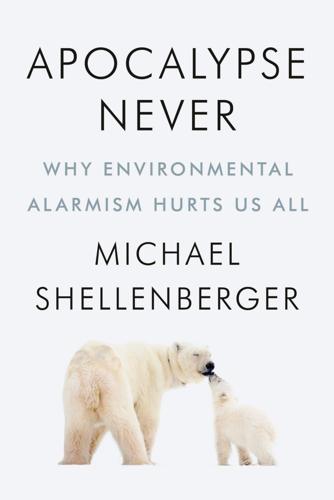
Apocalypse Never: Why Environmental Alarmism Hurts Us All
by
Michael Shellenberger
Published 28 Jun 2020
But that is still twice as high as Australia’s coal mines. As always there is a large range, with some petroleum fields producing as little as 100 W/m2. A typical natural gas well in Alberta, Canada, has a power density of 2,300 W/m2 while the Netherlands’ gas fields have a power density of 16,000 W/m2. A Liquified Natural Gas (LNG) terminal has a power density of 4,600 W/m2 while a regasification terminal has a power density of an astonishing 60,000 W/m2. Smil, Power Density, 197. 76. Chris Mooney, “Why We’re Still So Incredibly Confused About Methane’s Role in Global Warming,” Washington Post, May 2, 2016, https://www.washingtonpost.com. 77.

Hope Dies Last: Visionary People Across the World, Fighting to Find Us a Future
by
Alan Weisman
Published 21 Apr 2025
But using fracked natural gas, liquefied under energy-sucking pressure to replace coal, is no cure, especially with more methane leakages constantly being discovered. Instead of pulling back from the 1.5°C brink, temperature and wind speed records across the globe were being smashed annually, in nonlinear leaps that existing models couldn’t predict—while Donald Trump vowed if reelected to unfreeze LNG terminal permits on day one and to auction new drilling leases from Alaska to the Gulf of Mexico. Michael Greenberg’s generation knows we will never have this chance again. “You need to stubbornly believe there might be a path forward, that your actions can have real consequences,” he says. “Not having hope is a self-fulfilling prophecy.”
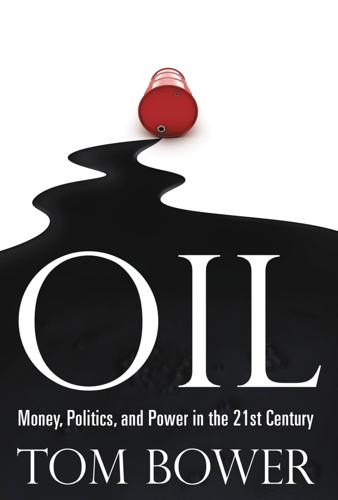
Oil: Money, Politics, and Power in the 21st Century
by
Tom Bower
Published 1 Jan 2009
Only Western oil companies possessed the expertise to exploit the field, 342 miles from the shore and containing an estimated 141 trillion cubic feet of natural gas. Ever since its discovery in 1988, Russia had dithered about granting a license. Five Western companies believed they had won the Kremlin’s approval in 1990, but two years later the agreement was canceled. In 1995, Norsk Hydro of Norway, Conoco, Total and others were encouraged to consider an LNG terminal in the Barents Sea, but that was also abandoned. In 2000, Gazprom signed agreements with Exxon, Conoco, Chevron and Shell, and in 2005 invited their bids to build an LNG plant, but the following year Putin excluded all the American companies. By October 2006, in the midst of the argument with Shell, Putin had decided that Russia would develop Shtokman itself.

The Hunt for Red October
by
Tom Clancy
Published 2 Jan 1984
The Dallas and the Pogy were still submerged, somewhere aft, sniffing for additional interference as they neared Capes Henry and Charles. Somewhere farther aft an LNG (liquified natural gas) carrier was approaching the passage, which the coast guard had closed to all normal traffic in order to allow the floating bomb to travel without interference all the way to the LNG terminal at Cove Point, Maryland—or so the story went. Ryan wondered how the navy had persuaded the ship's skipper to fake engine trouble or somehow delay his arrival. They were six hours late. The navy must have been nervous as all hell until they had finally surfaced forty minutes earlier and been spotted immediately by a circling Orion.

Imagining India
by
Nandan Nilekani
Published 25 Nov 2008
In India itself new gas discoveries in the Krishna Godavari basin and in Cochin are quickly driving up our total reserves—Reliance Industries’ oil and gas discoveries in parts of the Krishna Godavari basin, it estimates, could supply 40 percent of our domestic production. Dr. Nicholas Stern thinks that these finds make an ambitious nationally networked gas infrastructure viable. “Encouraging LNG terminals and pipelines on both sides of India and extending the country’s gas pipeline should be a core energy strategy,” he says. In fact a complex, intricate grid for piped gas is emerging across the country. And once there is a gas grid in place, we will see economies of scale taking over, with CNG networks into homes and into outlets for buses and cars, and more gas-powered plants.